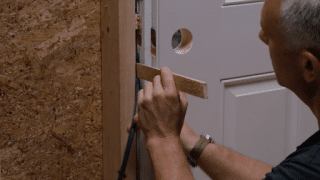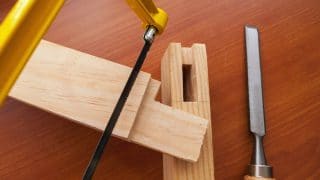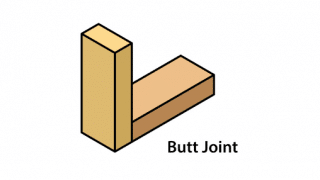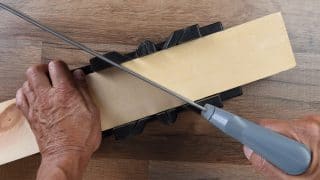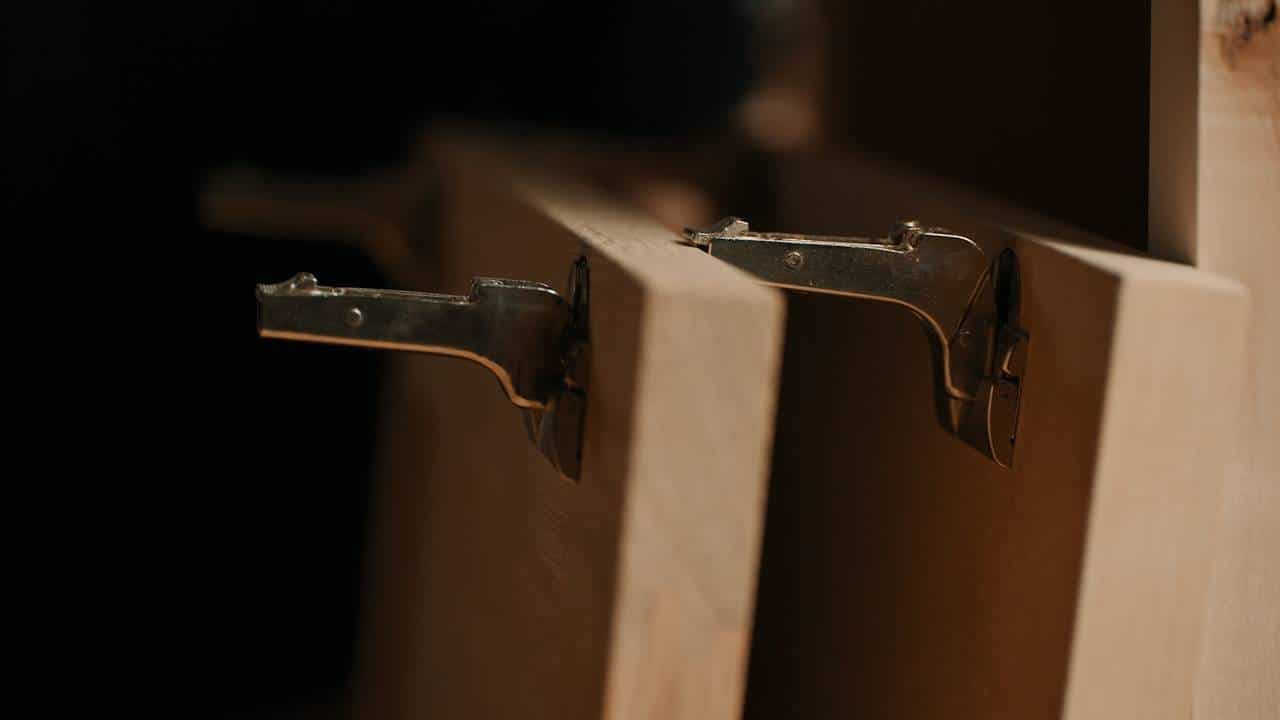
When it comes to hinge types, the options can seem endless, but the type of cabinet and door style you are working with will narrow your choices down immensely. From there, you can begin to hone in on special features, styles, and finishes based on your needs, personal preferences, and the style of your home.
How to choose the right cabinet hinge
1. Consider your door overlay style
It’s essential that the hinge type you use matches the cabinet door style that you are building so that the door is mounted with the proper amount of clearance. There are two main styles of door overlay—inset doors and overlay doors. Overlay doors come in partial overlay and full overlay. Take a look at your cabinet design to determine which you are working with.
- Inset: The cabinet door is flush with and on the same plane as the cabinet frame, and the frame surrounds the entire cabinet door. For inset doors, the most common hinges are butt hinge or surface mount, and inset European.
- Full Overlay: Also simply called overlay, a full overlay door covers the entire cabinet opening when closed, and the inside wood edge of the cabinet box is exposed when the door is open. For full overlay doors, the most common hinges are full and partial wraparound, flush mount, surface mount, and full overlay European.
- Partial Overlay: In partial overlay, the cabinet door partially covers the cabinet box when the door is closed, and the inside wood edge of the cabinet box is exposed when the door is open. For partial overlay doors, the most common hinges are full and partial wraparound, flush mount, surface mount, and partial overlay European.
Learn how to choose the best type of hinge for any cabinet project from cabinet maker Ken DeCost in MT Copeland’s Introduction to Cabinetry online course.
2. Decide if you want hinges concealed or exposed
Exposed hinges, like butt hinges, are visible and often intentionally so. They are extremely common in traditional American styles of cabinets and vintage styles. On the other hand, concealed hinges offer a clean exterior look and more contemporary style.
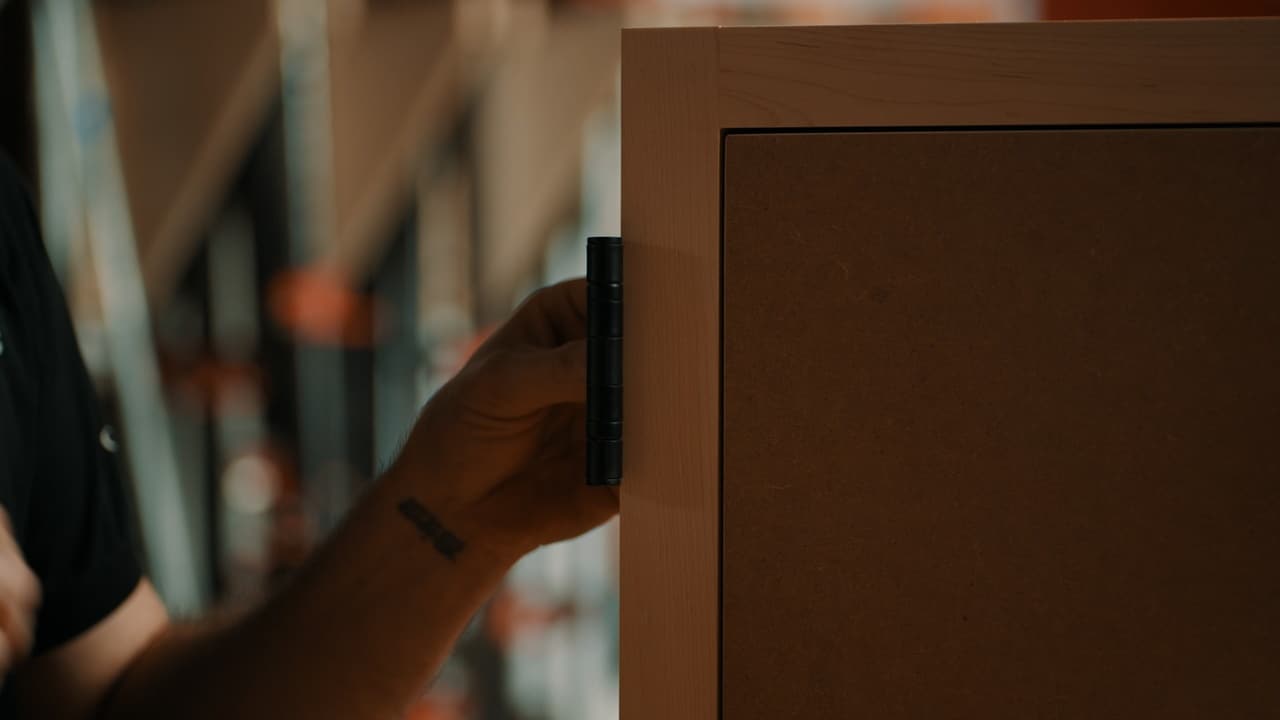
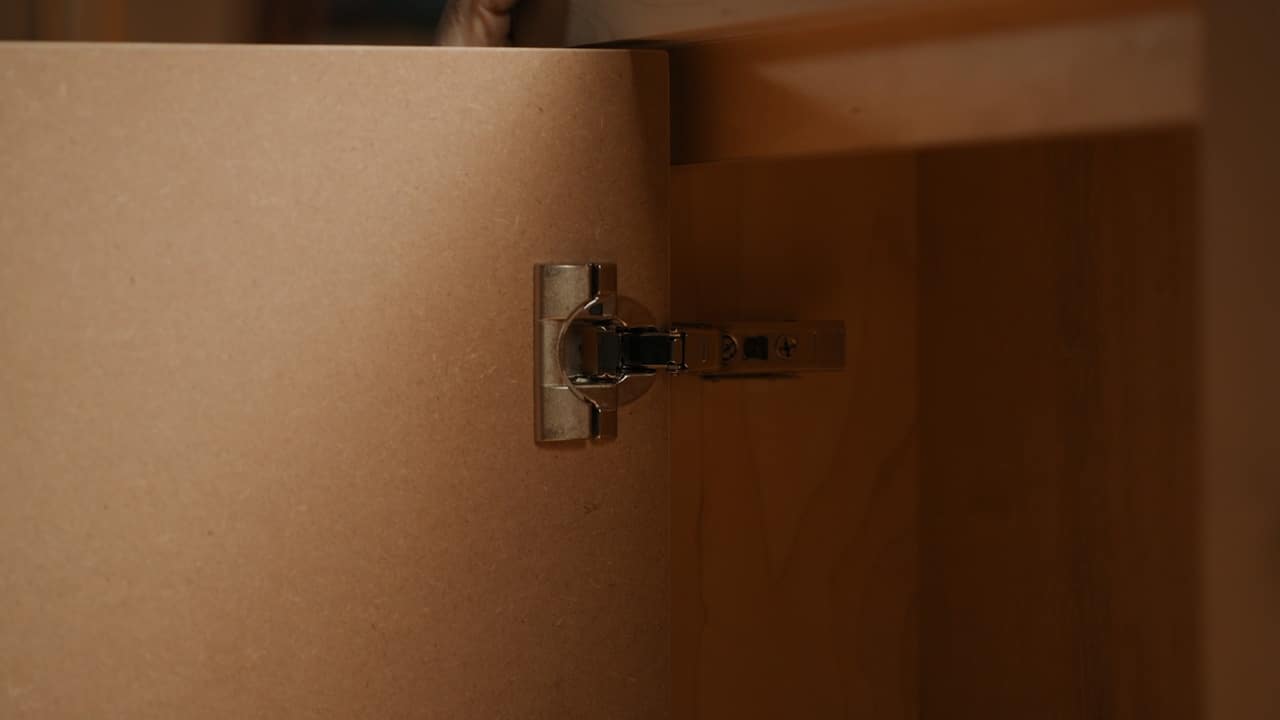
3. Choose either surface mount or mortised
Surface mount hinges act exactly as they sound—they sit on top of the surface of the cabinet material and do not require a hole or mortise to be drilled. Mortise hinges however are recessed into the cabinet and require boring a hole to install.
4. Decide if you want motion features
Motion features like soft closing hinges are becoming increasingly popular because they reduce noise from slamming and make closing a door as easy as a tap, even with full hands in the kitchen. Here are the most popular motion features:
- Soft-close: Keeps doors from slamming by slowly drawing them in.
- Self-close: Available in some concealed hinges. Similar to soft close hinges and draws the door in with even less effort from the user.
- Self-open: Simply press the drawer front to pop open the door. Good for modern styles that do not have external cabinet hardware.
10 Common cabinet hinge styles
The many types of cabinet hinges vary in size and application but there are two main categories: traditional and European.
- Traditional styles are often more visible and designed for face framed cabinets.
- European styles are concealed when the door is closed.
In addition to the most common hinge types, there are many hinges made specifically for restoration projects, more ornate decorative styles, and even hinges just for piano lids.
1. European hinges
Professional carpenter Ken DeCost prefers the European type of hinge, which is installed on the interior of the cabinet and concealed when the door is closed. European style hinges (designed for frameless cabinets popular in Europe) come in a range of sizes made to fit inset, partial, and full overlay style doors. They offer greater room for adjustments and can support heavier doors.
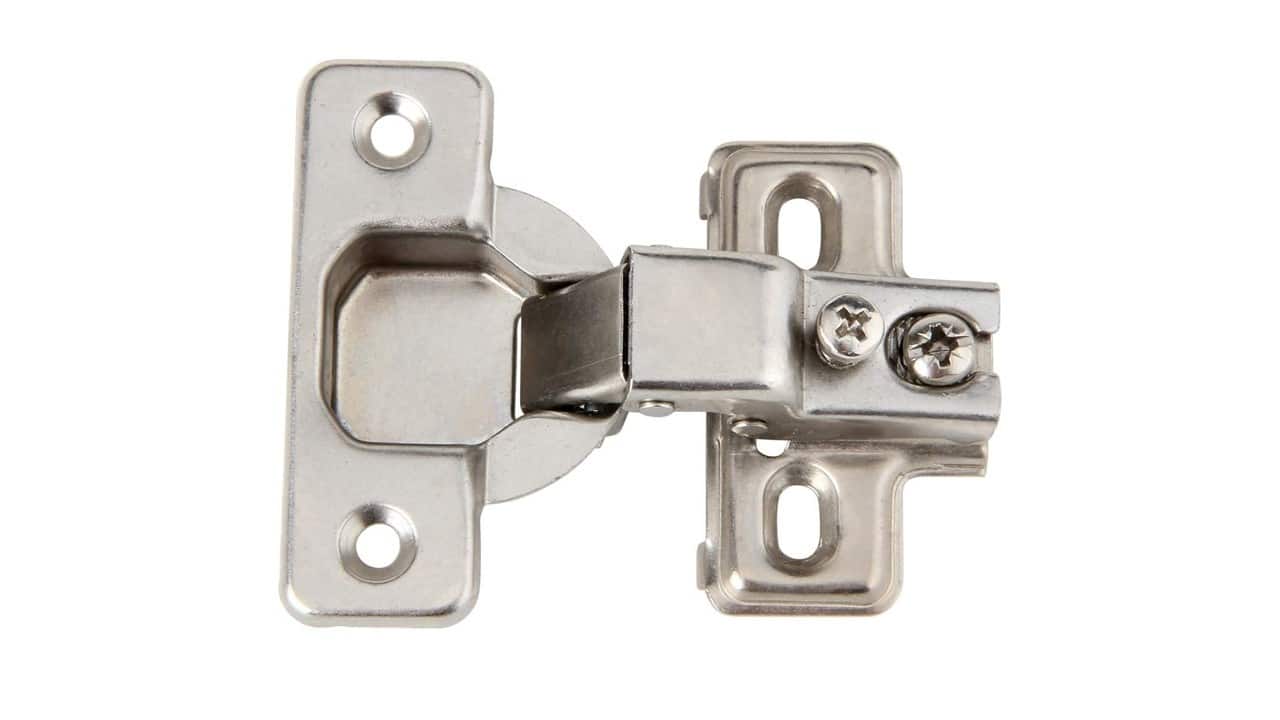
2. “Full crank” or inset hinge
This is a type of European hinge that takes their name from the bend in the hinge arm. They are offset from the edge of the door so that the door can sit flush with the cabinet face or box when closed. Inset hinges are good for inset overlay doors and create a sleek, flush look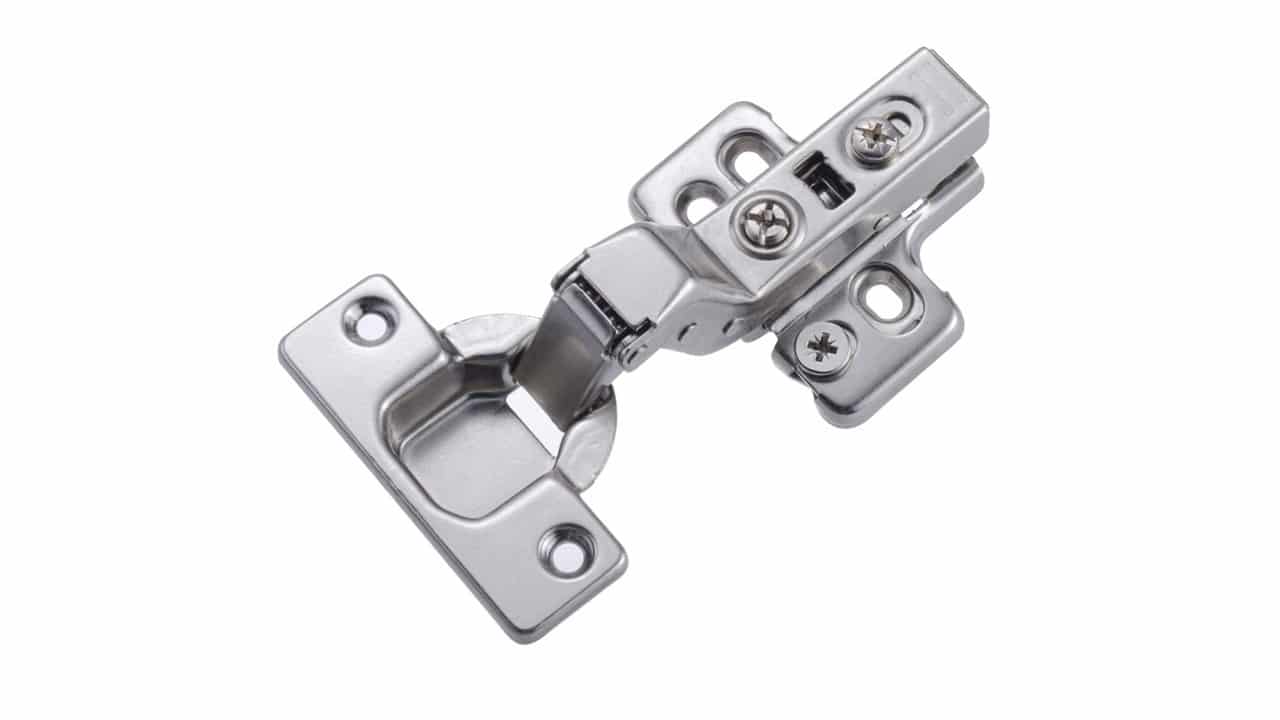
When it comes to hinge types, the options can seem endless, but the type of cabinet and door style you are working with will narrow your choices down immensely. From there, you can begin to hone in on special features, styles, and finishes based on your needs, personal preferences, and the style of your home.
How to choose the right cabinet hinge
1. Consider your door overlay style
It’s essential that the hinge type you use matches the cabinet door style that you are building so that the door is mounted with the proper amount of clearance. There are two main styles of door overlay—inset doors and overlay doors. Overlay doors come in partial overlay and full overlay. Take a look at your cabinet design to determine which you are working with.
- Inset: The cabinet door is flush with and on the same plane as the cabinet frame, and the frame surrounds the entire cabinet door. For inset doors, the most common hinges are butt hinge or surface mount, and inset European.
- Full Overlay: Also simply called overlay, a full overlay door covers the entire cabinet opening when closed, and the inside wood edge of the cabinet box is exposed when the door is open. For full overlay doors, the most common hinges are full and partial wraparound, flush mount, surface mount, and full overlay European.
- Partial Overlay: In partial overlay, the cabinet door partially covers the cabinet box when the door is closed, and the inside wood edge of the cabinet box is exposed when the door is open. For partial overlay doors, the most common hinges are full and partial wraparound, flush mount, surface mount, and partial overlay European.
Learn how to choose the best type of hinge for any cabinet project from cabinet maker Ken DeCost in MT Copeland’s Introduction to Cabinetry online course.
2. Decide if you want hinges concealed or exposed
Exposed hinges, like butt hinges, are visible and often intentionally so. They are extremely common in traditional American styles of cabinets and vintage styles. On the other hand, concealed hinges offer a clean exterior look and more contemporary style.


3. Choose either surface mount or mortised
Surface mount hinges act exactly as they sound—they sit on top of the surface of the cabinet material and do not require a hole or mortise to be drilled. Mortise hinges however are recessed into the cabinet and require boring a hole to install.
4. Decide if you want motion features
Motion features like soft closing hinges are becoming increasingly popular because they reduce noise from slamming and make closing a door as easy as a tap, even with full hands in the kitchen. Here are the most popular motion features:
- Soft-close: Keeps doors from slamming by slowly drawing them in.
- Self-close: Available in some concealed hinges. Similar to soft close hinges and draws the door in with even less effort from the user.
- Self-open: Simply press the drawer front to pop open the door. Good for modern styles that do not have external cabinet hardware.
10 Common cabinet hinge styles
The many types of cabinet hinges vary in size and application but there are two main categories: traditional and European.
- Traditional styles are often more visible and designed for face framed cabinets.
- European styles are concealed when the door is closed.
In addition to the most common hinge types, there are many hinges made specifically for restoration projects, more ornate decorative styles, and even hinges just for piano lids.
1. European hinges
Professional carpenter Ken DeCost prefers the European type of hinge, which is installed on the interior of the cabinet and concealed when the door is closed. European style hinges (designed for frameless cabinets popular in Europe) come in a range of sizes made to fit inset, partial, and full overlay style doors. They offer greater room for adjustments and can support heavier doors.

2. “Full crank” or inset hinge
This is a type of European hinge that takes their name from the bend in the hinge arm. They are offset from the edge of the door so that the door can sit flush with the cabinet face or box when closed. Inset hinges are good for inset overlay doors and create a sleek, flush look
3. “Half crank” or partial overlay hinge
Another type of European hinge that is also referred to as a half crank hinge because it has slightly less bend than an inset hinge. The partial overlay hinge is very similar to the inset hinge but is set back from the edge a little further than inset allowing the edge of the door to overlay the case partially. Use these for partial overlay doors.
4. Full overlay hinge
A full overlay hinge is a type of European hinge with a completely straight arm which makes the offset much greater than partial overlay or inset hinge styles. This allows the door to completely overlay the cabinet box. Use these for full overlay doors. 
5. Surface mount
Surface mount hinges are mounted to the outside of the frame and the outside of the door making the entire hinge visible. Opt for this hinge type when you want to feature the style of the hinge. These are typically only used on the face frame cabinet type. 
6. Butt hinge
Butte hinges are made of two mounting plates and a barrel. Mount one of the plates to the side of the frame and the other mounting plate to the side of the door, with the barrel being exposed. Good for simple installation and to achieve a tradition look.
7. Flush hinge
Similar to a butt hinge but has a slimmer profile. Good for completely flush doors where you cannot drill a mortise. They take up less space than a butt hinge but the barrel is visible from the outside. 
8. Semiconcealed
Semi-concealed hinges hide the main mechanism of the hinge behind the cabinet door but some of the hinge is exposed on the frame or door edge. The frame wing is visible but the door wing is hidden. Use for overlay doors on face frame cabinets. 
9. Wrap around
Wrap around hinges look similar to semi-concealed hinges but feature either a partial extra wrap around the inside edge of the frame, or a full wrap that continues into the inside of the frame. Use these for the look of a semi-concealed but with added support. 
10. T-style hinge
On a T-style hinge, one vertical wing attaches to the cabinet frame and one horizontal wing attaches to the outside of the cabinet door. This is a visible style for face frame cabinets that is also common for sheds and barn doors. Heavy duty and easy to install. 
MT Copeland offers video-based online classes that give you a foundation in construction fundamentals with real-world applications, like building cabinets. Classes include professionally produced videos taught by practicing craftspeople, and supplementary downloads like quizzes, blueprints, and other materials to help you master the skills.


